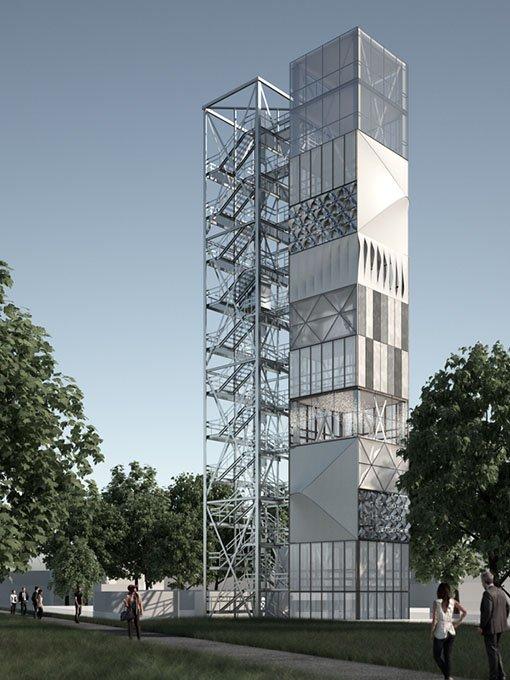Lightweight construction is one way to save raw materials, as it requires much less material than conventional construction. However, at the same time, lightweight supporting structures must also be able to withstand any load that occurs. Since the loads are not known in advance, very conservative estimates are made. This means structures are still heavily oversized for safety reasons. Researchers at the University of Stuttgart have developed active, adaptive structural elements that can be used to manipulate the load transfer behaviour in a structure. This innovation enables future-oriented, so-called ultra-lightweight constructions, which again save significant amounts of material compared to conventional lightweight construction, without, however, reducing the safety of the supporting structure. For this purpose, actuators – i.e. active elements – are integrated in parallel and/or serially into the passive support structure.
The actuator assemblies developed by Julia Wagner and Dr. Michael Böhm at the Institute for System Dynamics (ISYS) together with Timon Burghardt at the Institute for Construction and Technical Design (IKTD) consist of the active element as well as mechanical components for force transmission. In the passive state, the latter serve to maintain the pre-load, thus eliminating the need for additional elements for this purpose.
Such assemblies turn a conventional lightweight structure into an ultra-lightweight structure, capable of actively compensating for deformations caused by dynamic and static loads. Each element exerts or dissipates tensile or compressive forces depending on the load condition. This happens automatically when they are combined with appropriate sensors and a control unit. The active elements can be operated hydraulically, pneumatically or (piezo) electrically, for example.
These adaptive structural elements will make it possible to considerably reduce the amount of required material and thus the overall weight of structures in the future. At the same time, the damping of all vibrations significantly increases the service life of the load-bearing structures, which substantially reduces the amount of waste and thus disposal costs. These actuators could be used in all high-rise buildings (not only in lightweight constructions) as well as in existing structures, such as bridges.
Patents for the structural elements are pending. Technologie-Lizenz-Büro (TLB) GmbH has been commissioned by the University of Stuttgart with the commercial implementation of their invention and is looking for partners from industry for the market launch. TLB GmbH offers companies the possibility of licensing the patented technology or possibly purchasing the property rights. For further information, please contact: Emmerich Somlo (esomlo@tlb.de)
The adaptive structural elements are currently being tested in practice in a demonstration building. The adaptive high-rise building, which is approximately 37 metres high, is located on the campus of the University of Stuttgart and was built as part of the Collaborative Research Centre 1244 funded by the German Research Foundation under the leadership of Prof. Werner Sobek (Institute for Lightweight Design and Construction, ILEK) and Prof. Oliver Sawodny (Institute for System Dynamics, ISYS).
SFB 1244 at the University of Stuttgart is concerned with the question of how, in view of a growing world population and dwindling resources, more living space can be created with less material in the future. 14 university institutes from a wide range of disciplines are researching the potential and applicability of adaptive building envelopes and structures in the building industry, with the goal of achieving maximum savings in material and energy consumption while simultaneously increasing user comfort. Research includes both the development of individual (construction) components as well as their integration into an overall system.
Creating value from ideas – Technologie-Lizenz-Büro (TLB) GmbH is an agency for invention and patent management in Germany. TLB accompanies inventions from universities, companies and inventors on their way from the first idea to the commercial product. As a partner of science and industry, TLB has been offering customised services and intelligent solutions in invention and patent management for more than 20 years.
Technologie-Lizenz-Büro (TLB) der Baden-Württembergischen Hochschulen GmbH
Ettlinger Str. 25
76137 Karlsruhe
Telefon: +49 (721) 79004-0
Telefax: +49 (721) 79004-79
http://www.tlb.de/
PR-Managerin
Telefon: +49 721/ 79004-0
Fax: +49 721/ 79004-79
E-Mail: asiller@tlb.de
![]()

